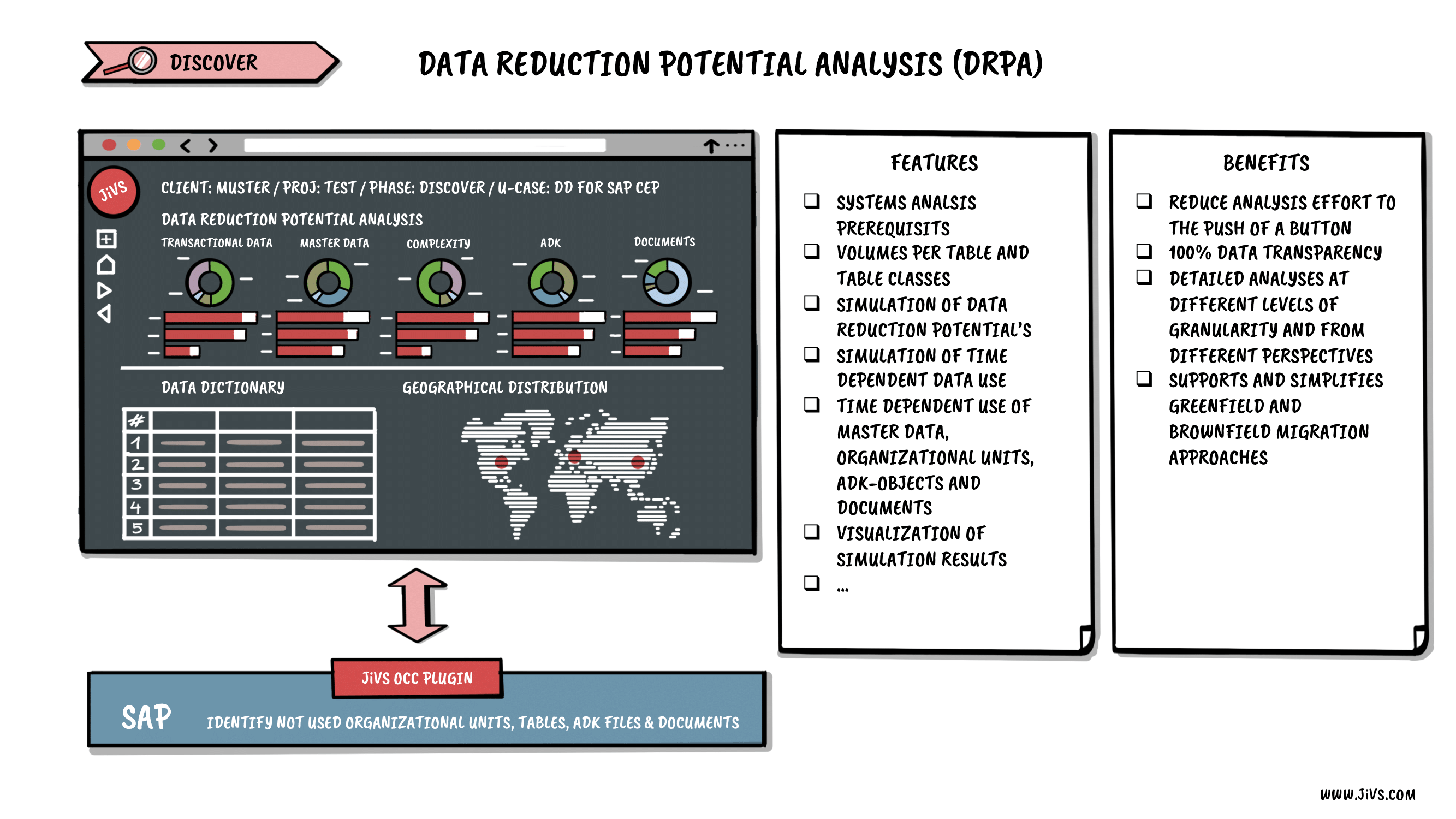As part of modern and agile data management, companies should strive to keep their data volume – and their data footprint – to a minimum wherever possible. At DMI, we have been helping companies do this for many years. Identifying operational and historical data forms part of our standard data migration approach and JiVS Information Management Platform. But through discussions with customers and partners, we realized there was a need for companies to understand more clearly the quantifiable potential for reducing data across their own organization. Each company is unique and has its own, unique set of data, so there is no one-size-fits-all formula. As data experts, we wanted to come up with a simple way of obtaining this information and presenting it to our customers, and so we spent many months developing, testing, and piloting the Data Reduction Potential Analysis (DRPA) solution.
When Does it Make Sense to Run a Data Reduction Potential Analysis?
A perfect opportunity for running a DRPA is when a company is planning to upgrade their existing ERP system to a new version or if they are considering changing ERP supplier completely. The results of the DRPA play an important part in the planning and costing process as they provide valuable insights into specific areas where considerable costs savings can be made by reducing the data volume. These are not the only scenarios in which a DRPA makes sense. Any company wishing to reduce how much data is stored in its live systems can benefit from this new solution. A company’s reason for reducing its data volume may be to lessen its environmental impact by having a smaller data footprint, or it might purely be to save costs. Most likely though, it is a combination of both.

Essentially, the DRPA solution allows our customers to simulate their data reduction potential, with very little system analysis effort required. In other words, in a way that is much quicker and cost effective than the more time-consuming and painstaking methods currently deployed. Powered by the JiVS One Click Cockpit, the DRPA is performed on each of the customer’s systems – both SAP and non-SAP – whereby it analyzes and identifies all the data that is ‘unused’. Depending on the level of granularity selected, it analyzes the time-dependent use of master data, organizational units, ADK objects, and documents, to determine whether or not each individual piece of data is still needed.
After running the simulation, the next step is to visualize the results and understand the data reduction potential in greater detail. Simple dashboards clearly show the customer how much of their data is unused, focusing primarily on the areas of transactional data, master data, ADK objects, and documents. It provides instant visibility of where data can potentially be reduced and by approximately how much. Companies are usually very surprised to discover that such a high percentage of their data is unused (historical) and is therefore no longer needed in their live system. In fact, 90% of a company’s data is typically historical, and only 10% of it is operational.

The customer now has a clear picture of what data they are currently ‘using’ and should keep in their live system or transfer to a new system environment as part of a migration project. This means that the remaining data can be archived. The JiVS Information Management Platform fits seamlessly into the process here, by integrating with the customer’s source systems and enabling them to separate used and unused (or operational and historical) data. If your organization is planning a system upgrade or migration, or if you simply want to reduce your current data footprint, get in touch with us here and we will talk you through the different steps. The process for setting up and running a DRPA on your systems is simple. We do all the analysis work, and you benefit by having a clear understanding of your organization’s data reduction potential.

